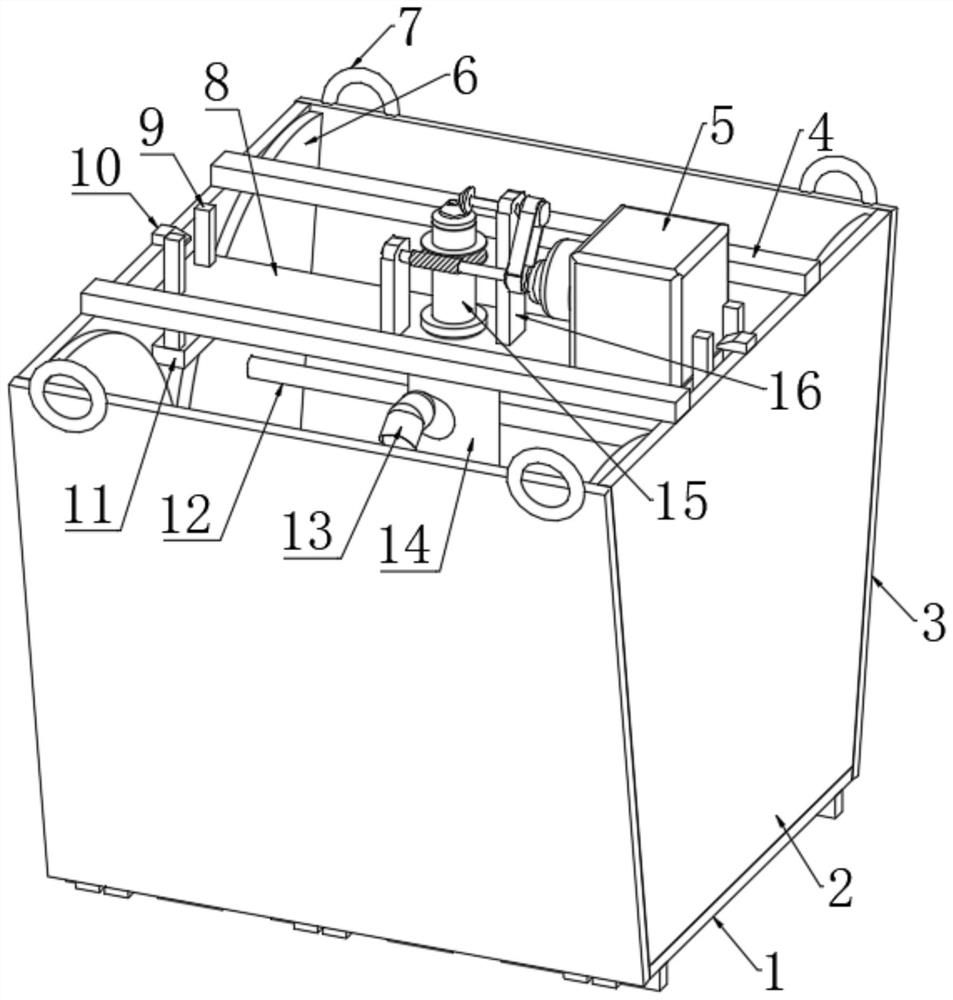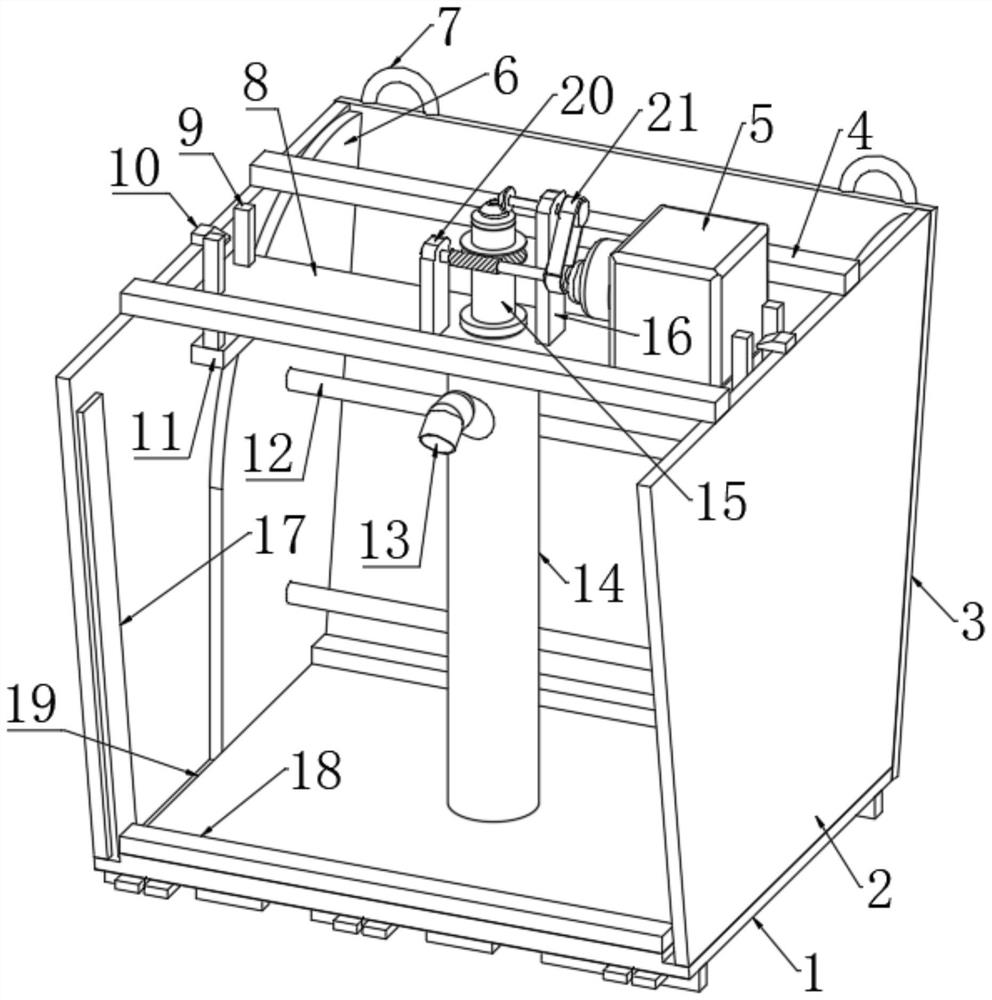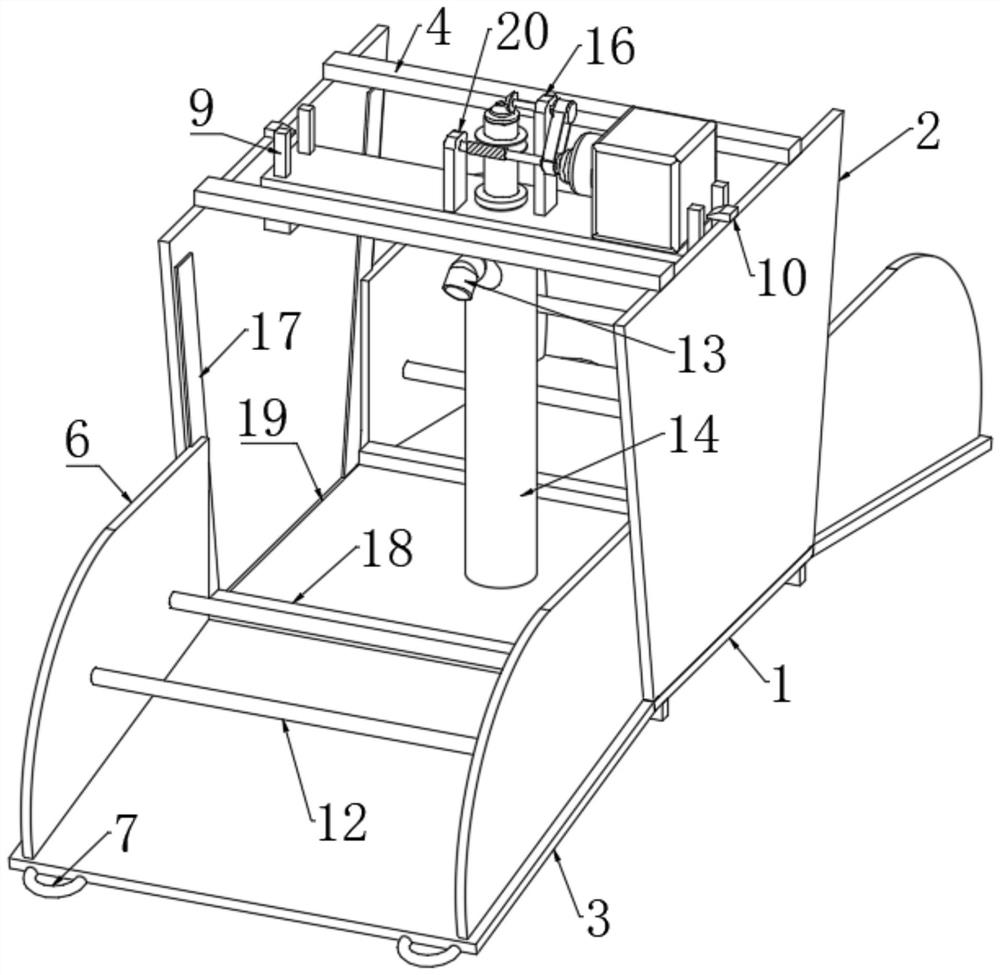Device for removing accumulated water in pothole terrain in building construction
A technology for building construction and potholes, applied in the field of stagnant water cleaning, can solve problems such as difficulty in walking for construction machinery and construction personnel, difficulty in removing stagnant water, affecting construction speed, etc., to improve speed, facilitate walking, and increase water intake Effect
- Summary
- Abstract
- Description
- Claims
- Application Information
AI Technical Summary
Problems solved by technology
Method used
Image
Examples
Embodiment 1
[0028] refer to Figure 1-7, a device for removing accumulated water in construction potholes, comprising a bottom plate 1, the left and right ends of the bottom plate 1 are fixedly connected with trapezoidal plates 2, and the upper ends of the two trapezoidal plates 2 are jointly fixedly connected with two cross bars 4, the bottom plate 1 The center of the upper end of the pipe is fixedly connected with a conduit 14 through a round hole, the upper end of the conduit 14 is provided with a horizontal plate 8, the side wall of the horizontal plate 8 is connected to the tube wall of the conduit 14 through rolling bearings, and the two ends of the horizontal plate 8 are respectively connected with two The opposite side of the trapezoidal plate 2 is connected, one side of the trapezoidal plate 2 is fixedly connected with a rectangular block 11, and the upper end of the rectangular block 11 is fixedly connected with two rectangular rods 9, and the side wall of the horizontal plate 8 ...
Embodiment 2
[0030] Embodiment 2: the difference based on Embodiment 1 is;
[0031] refer to Figure 2-6 , the pumping mechanism includes a rotating shaft 31, the shaft wall of the rotating shaft 31 is rotatably connected with a sealing plate through a sealed bearing, the sealing plate is fixedly connected with the upper end of the casing 15, the shaft wall of the rotating shaft 31 is fixedly connected with a water pump impeller 32, and the upper end of the rotating shaft 31 The first bevel gear 22 passes through the sealed bearing and is fixedly connected. One side of the first bevel gear 22 is meshed with a second bevel gear 23. The upper end of the horizontal plate 8 is fixedly connected with a support rod 16. The rod wall of the support rod 16 passes through the second bevel gear. A ball bearing is rotatably connected with a transmission shaft 24, one end of the transmission shaft 24 is fixedly connected with one side of the second bevel gear 23, the other end of the transmission shaft...
Embodiment 3
[0033] Embodiment 3: the difference based on embodiment 1 is;
[0034] refer to Figure 5-6 , the anti-blocking mechanism includes a plurality of curved rods 33, and the plurality of curved rods 33 are annularly distributed. A transmission rod 34 is fixedly connected, and the rod wall of the transmission rod 34 is fixedly connected with a plurality of uniformly distributed cutter grains 35 through inclined holes, and the lower end of the rotating shaft 31 extends to the outside of the casing 15 and is connected with a circular plate through the second ball bearing. 30, the edge of the circular plate 30 is fixedly connected with one end of the transmission rod 34, the outer edge of the upper end of the casing 15 is fixedly connected with a worm wheel 26, one side of the worm wheel 26 is engaged with a worm 27, and one end of the worm 27 is connected to the second One side of the belt pulley 38 is fixedly connected to the center of the shaft, and one end of the worm 27 is rotat...
PUM
 Login to View More
Login to View More Abstract
Description
Claims
Application Information
 Login to View More
Login to View More - R&D
- Intellectual Property
- Life Sciences
- Materials
- Tech Scout
- Unparalleled Data Quality
- Higher Quality Content
- 60% Fewer Hallucinations
Browse by: Latest US Patents, China's latest patents, Technical Efficacy Thesaurus, Application Domain, Technology Topic, Popular Technical Reports.
© 2025 PatSnap. All rights reserved.Legal|Privacy policy|Modern Slavery Act Transparency Statement|Sitemap|About US| Contact US: help@patsnap.com



